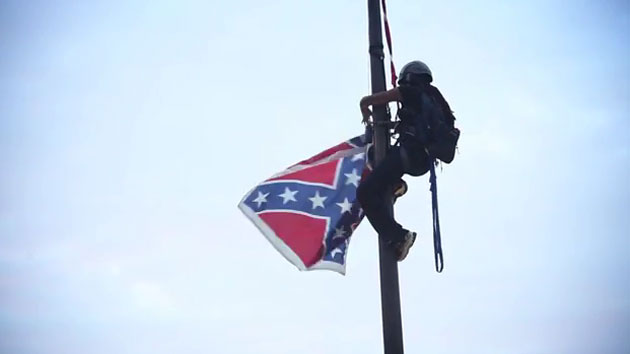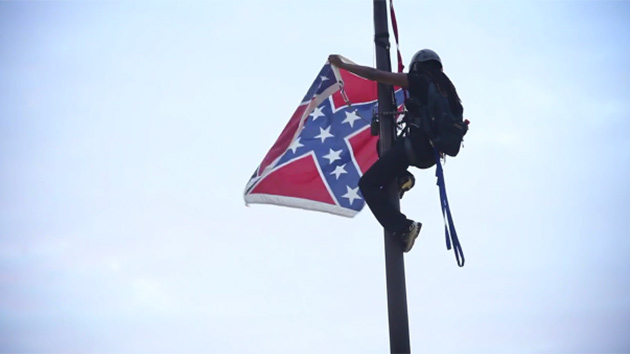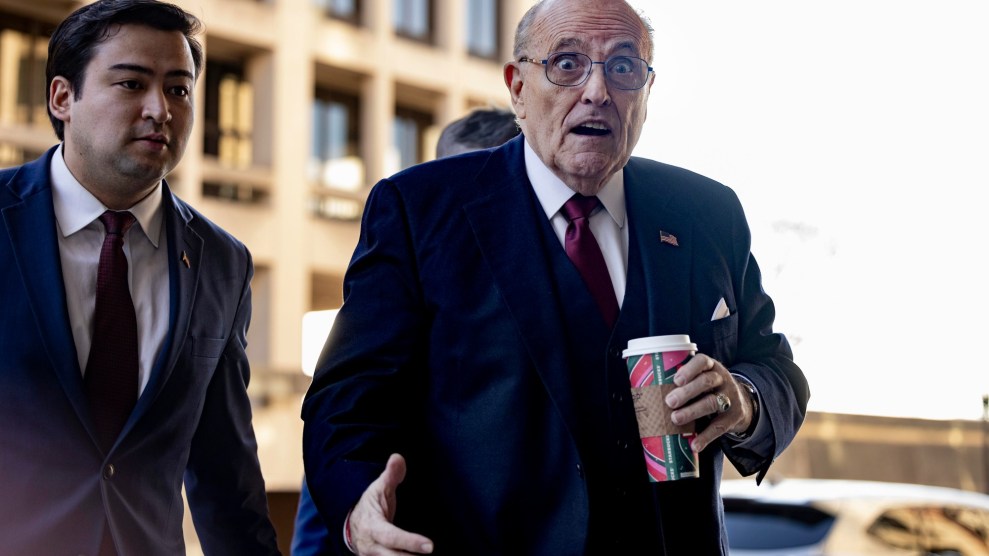
On Monday afternoon, Bree Newsome, the woman who scaled the flagpole at the South Carolina statehouse on Saturday and took down the Confederate flag, made her first public comments since her arrest, which were published on the progressive website Blue Nation Review. She detailed her recent history of activism and described her motivation:
The night of the Charleston Massacre, I had a crisis of faith. The people who gathered for Bible study in Emmanuel AME Church that night—Cynthia Marie Graham Hurd, Susie Jackson, Ethel Lee Lance, Depayne Middleton-Doctor, Tywanza Sanders, Daniel Simmons, Sharonda Coleman-Singleton, Myra Thompson and Rev. Clementa Pinckney (rest in peace)—were only doing what Christians are called to do when anyone knocks on the door of the church: invite them into fellowship and worship.
The day after the massacre I was asked what the next step was and I said I didn’t know. We’ve been here before and here we are again: black people slain simply for being black; an attack on the black church as a place of spiritual refuge and community organization.
I refuse to be ruled by fear. How can America be free and be ruled by fear? How can anyone be?So, earlier this week I gathered with a small group of concerned citizens, both black and white, who represented various walks of life, spiritual beliefs, gender identities and sexual orientations. Like millions of others in America and around the world, including South Carolina Governor Nikki Haley and President Barack Obama, we felt (and still feel) that the confederate battle flag in South Carolina, hung in 1962 at the height of the Civil Rights Movement, must come down. (Of course, we are not the first to demand the flag’s removal. Civil rights groups in South Carolina and nationwide have been calling for the flag’s removal since the moment it was raised, and I acknowledge their efforts in working to remove the flag over the years via the legislative process.)
We discussed it and decided to remove the flag immediately, both as an act of civil disobedience and as a demonstration of the power people have when we work together.
Explaining why she worked together with fellow activist James Ian Tyson, she continued:
Achieving this would require many roles, including someone who must volunteer to scale the pole and remove the flag. It was decided that this role should go to a black woman and that a white man should be the one to help her over the fence as a sign that our alliance transcended both racial and gender divides. We made this decision because for us, this is not simply about a flag, but rather it is about abolishing the spirit of hatred and oppression in all its forms.
Read Newsome’s whole statement here.












